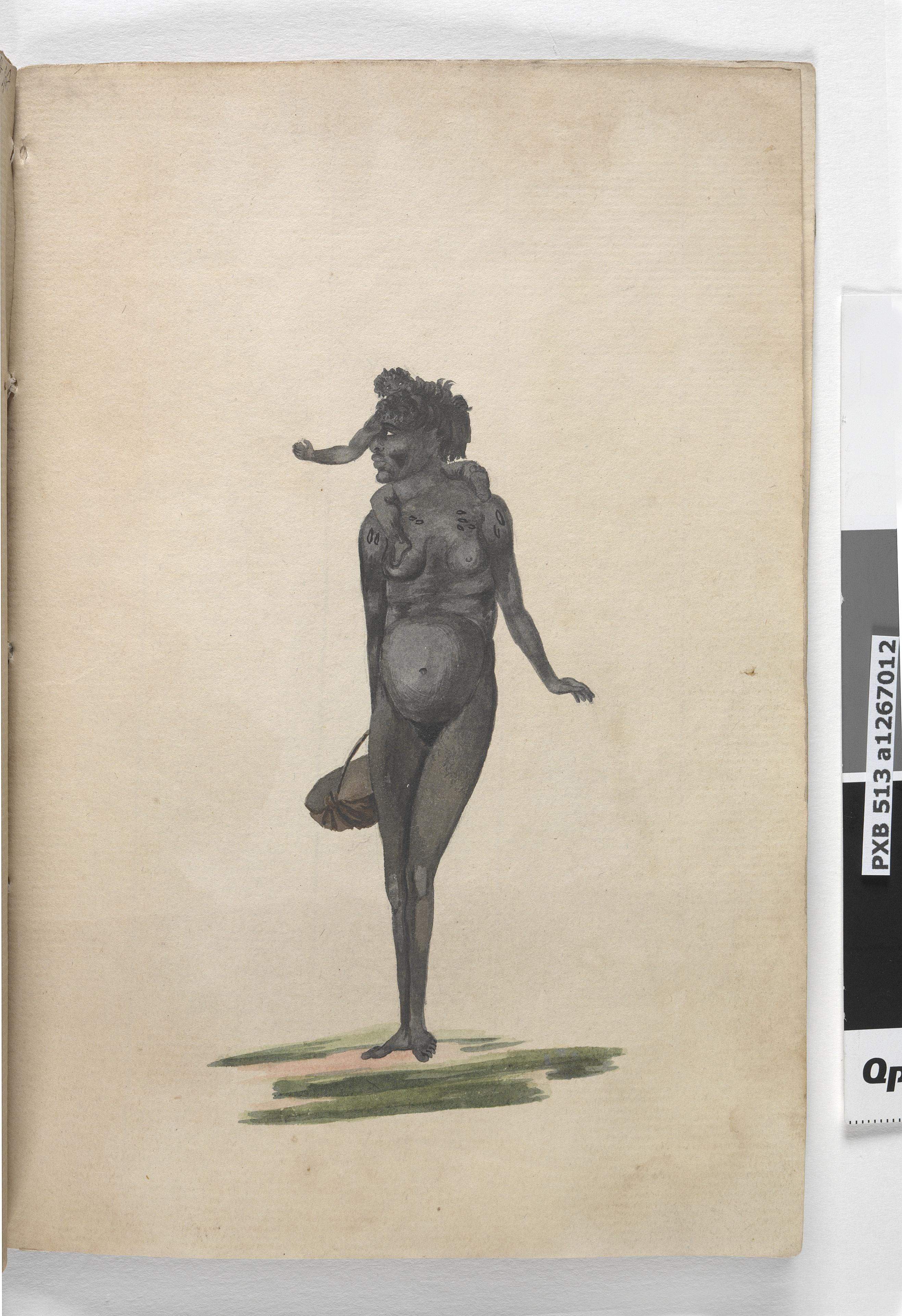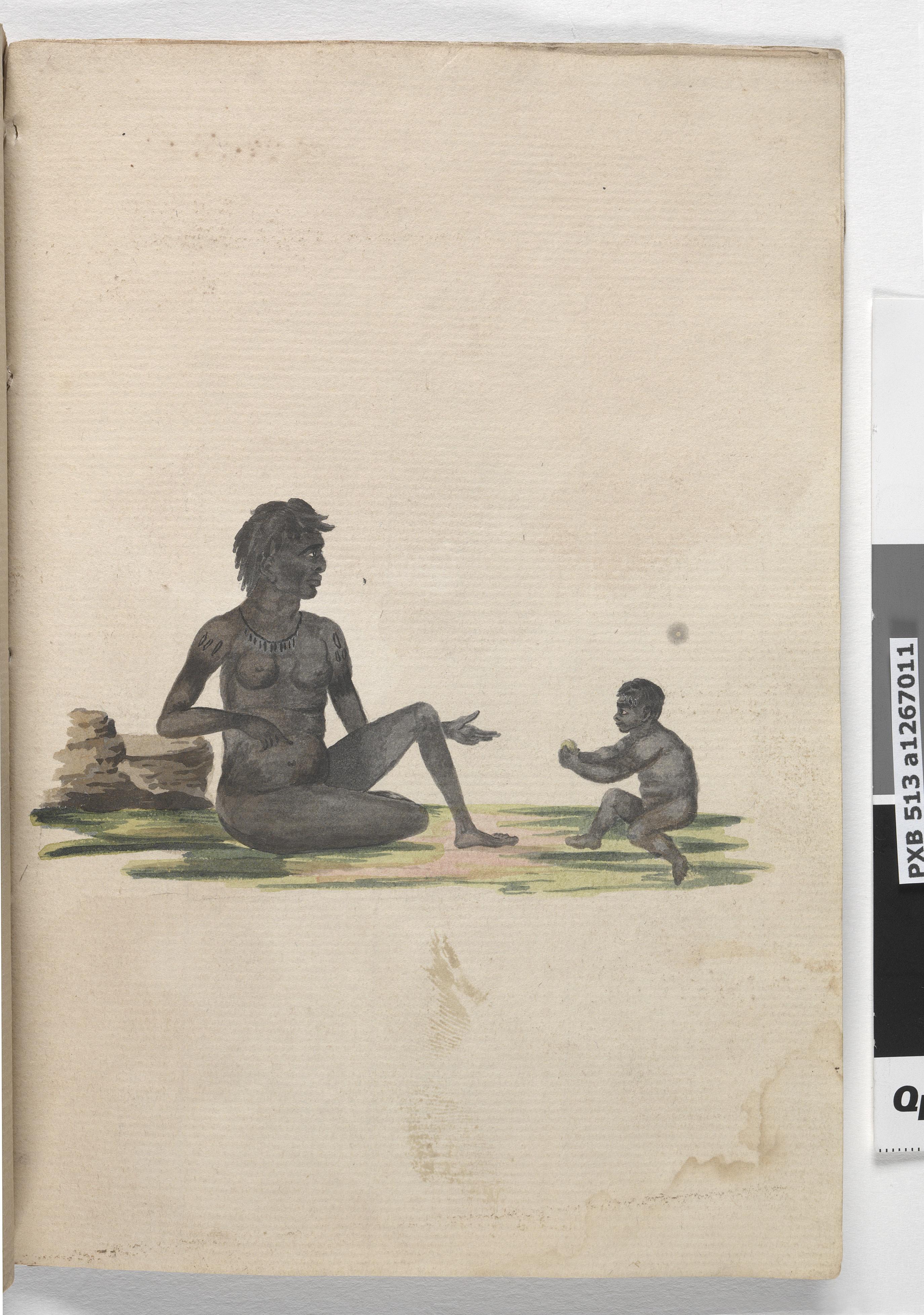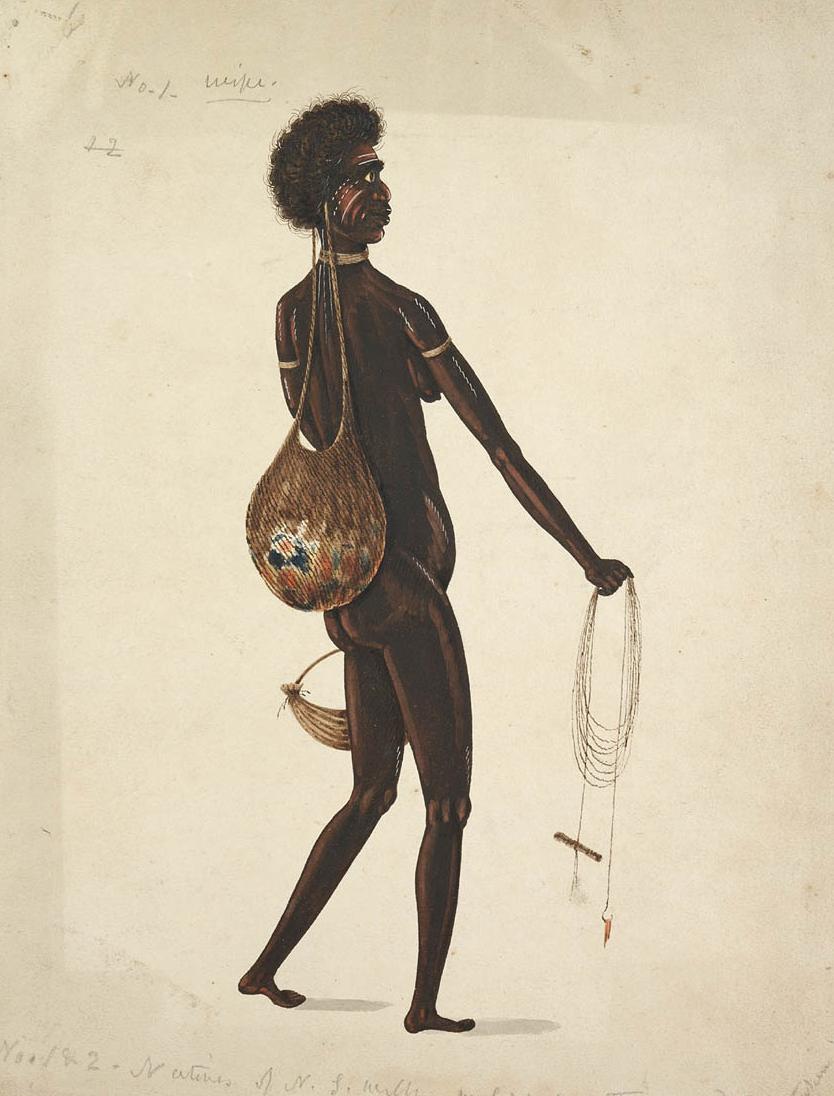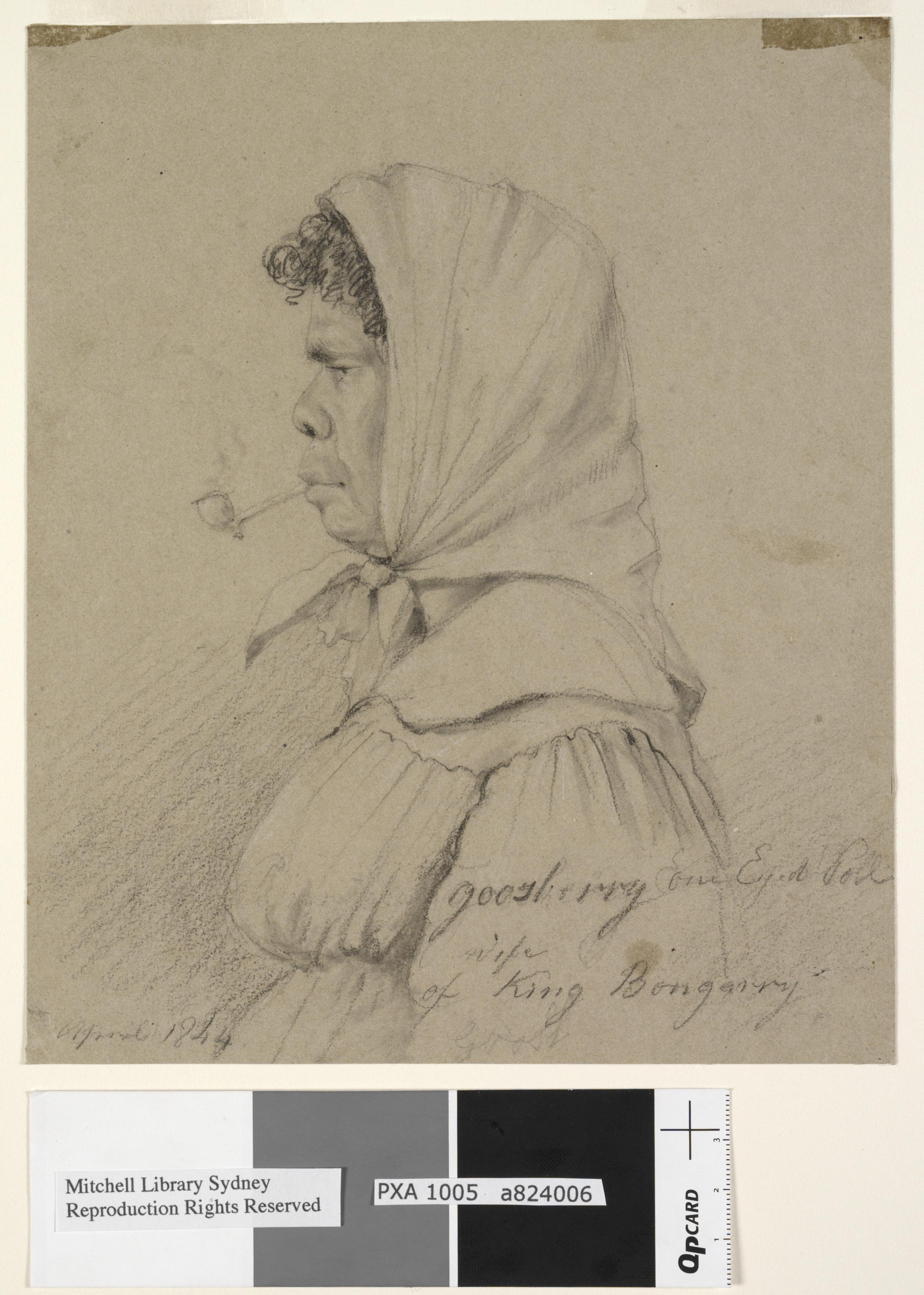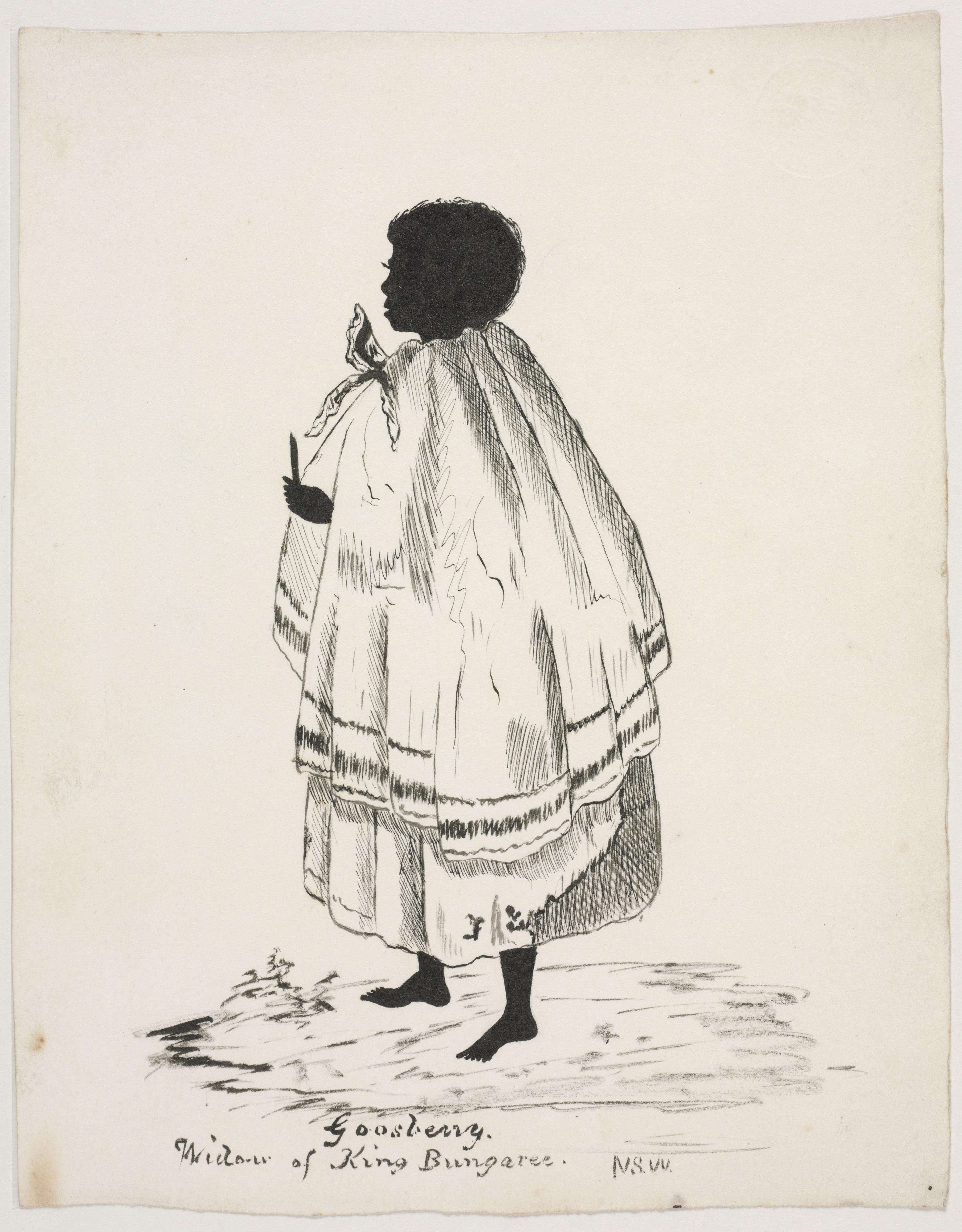Women at work
Students compare the work of convict and Aboriginal women and uncover the story of Caroo.
This is the student activity 1 of 6 of the Work to be done learning activity.
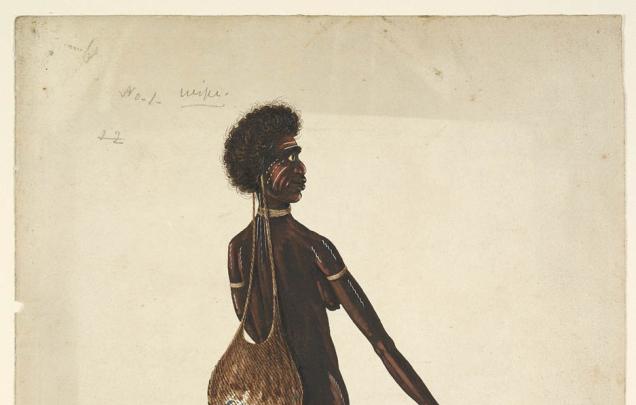
Convict women
Teachers note: Print Resource 1: Women at Work Cards
Women convicts in Sydney in 1788 had few options. Men were allocated to their jobs depending on their skills, the needs of the colony or as a punishment. Women were usually chosen as servants, wives or housekeepers to the officers with lodging. Some women became partners or wives to other convicts. Women became hut keepers to groups of convict men. Some women were sent to work as a punishment for breaking the rules.
Read the primary sources, below, and make a list of the ‘work’ or roles that women were doing.
Captain Watkin Tench recorded in June 1788 that:
The female convicts… a few are kept at work in making pegs for tiles, and picking up shells for burning into lime.
Judge David Collins wrote in August 1790:
The female convicts were employed in making the slops for the men, which had been now sent out unmade [from England]. Each woman who could work at her needle had materials for two shirts given her at a time.
He added in 1795:
…at Toongabbie some women were employed in making hay.
The book, The Voyage of Governor Phillip to Botany Bay, a secondary source published in 1790 that was based on the records of Arthur Phillip and other First Fleeters, describes the life of some women in early Sydney.
The women sweep round the huts every morning, and cook the victuals for the men, collect all their dirty cloaths, and return each man his respective linen, washed and mended, on the Sunday morning.
Meanwhile, on Norfolk Island (another penal settlement 1600km off the coast of NSW) Lieutenant Ralph Clark wrote in May 1790 of:
female Convicts in brin[g]ing in flax also to Thatch different Huts.
The following year he described:
the women Empd.[employed] in gathering the Corn.
Free settler George Thompson (who sailed on the Lord Admiral) said in 1792 that women:
who are not fortunate enough to be selected for wives… are made hutkeepers.
In 1796 Governor John Hunter pointed out that:
There is scarcely any way of employing convict women, even if employment was available, many women were taken up with nursing infants.
Define the meaning of the following words victuals, slops, flax and thatch.
Look at the images on the downloadable resource, Women at Work Cards. These images of women were painted in England in the same era as early transportation to NSW. Primary sources about convicts are rare. Although these images are not of convict women working in the NSW colony, they can help us understand the lives of women at that time.
Match the 6 jobs on this list to the images.
- Sewing
- Looking after babies
- Sitting by the stream washing clothes
- Cooking
- Gathering of small crops in a container
- Sweeping
The female convicts contributed to the work necessary to support the new colony. As well as these jobs there is also evidence of them making wooden pegs to hold clay roof tiles in place, collecting the shells that were used to make the lime mortar that was to hold bricks together, and the gathering of flax to make thatched roofing.
Answer these questions:
- Were cooking, cleaning, washing, sweeping and sewing considered ‘work’?
- Were these types of work a contribution to the workload of the people who had arrived with the First Fleet?
- What about caring for babies and looking after toddlers? Is that work?
- What other work do you think the women were doing that was not mentioned or shown?
Women of Warrane
Read these quotes from European men from the First Fleet about Aboriginal women they saw who were living in and around Sydney.
Captain John Hunter said in February 1788:
It must be remarked, that these hooks are not barbed; they nevertheless catch fish with them with great facility. While fishing, the women generally sing; and I have often seen them in their canoes chewing muscles or cockles, or boiled fish, which they spit into the water as a bait. In these canoes, they always carry a small fire laid upon sea-weed or sand; wherewith, when desirous of eating, they find a ready material for dressing their meal.
Captain Watkin Tench wrote, after 1791, that:
To the women are committed the fishing-lines, hooks, and nets…In general the canoe is assigned to her, into which she puts the fire, and pushes off into deep water, to fish with hook and line, this being the province of the women. If she have a child at the breast, she takes it with her.…cautiously moving in the centre of the vessel, the mother tends her child; keeps up her fire, which is laid on a small patch of earth; paddles her boat; broils fish; and provides in part the subsistence of the day.
Examine the images of Aboriginal women, below.
Analyse what work the Aboriginal women in the images are doing. Add another column to the list of jobs above and write in the work that Aboriginal women are doing.
Answer these questions:
- Are there any activities the Aboriginal women are doing that would have been familiar to the convicts? Did they do anything differently?
- Do you think there is any work that may not have been understood by these European male observers?
- What assumptions do these observers have about women?
- Did the European settlement impact on the lives of Aboriginal women in any way?
- What was the lasting impact on these women of the First Fleet’s colony which began at Warrane/Sydney Cove?
Caroo's story
In January 1788 Caroo was 11 years old and a proud member of the Murro-ore-dial people of the Eora Nation in the area south of Port Jackson. It is believed that Caroo was on the beach in Sydney with her father Moorooboora (a respected elder of their people) and others from her clan on 26th January 1788. She would have looked out to sea and seen some strange shapes on the water – were they perhaps giant birds? They were very concerned and decided to seek a safe place so ran for 36km to Parramatta, likely recalling stories of the violent encounter between the Endeavour crew and the Gadigal people 18 years earlier. Caroo’s life changed forever on the day she watched these strangers in their ships arriving.
Discuss the changes that might have occurred in Caroo’s life after January 1788.
Caroo, who was also called Cora Gooseberry, grew up and married an Aboriginal man named Bungaree. Many years after the First Fleet arrived, Caroo is recorded as living amongst the colonists in Sydney Town. You can see her wrapped in a blanket with stripes which indicated the blanket was government property, a poor replacement for the skins and furs her people could no longer make.
Look at the images of Caroo, below.
Caroo and Bungaree were the ‘keepers of cultural knowledge’ for their people. Later on, Caroo used some of this knowledge in her work - she was the first cultural tourism operator in Sydney! In the 1840s she would take people on ‘cultural tours’ but she was careful not to reveal anything secret or anything sacred to these strangers. Caroo was apparently adored by everyone, but even so her life as an Aboriginal woman in the colony was often brutal .
Caroo witnessed enormous change and is a wonderful example of an early pioneer who adapted and overcame impossible situations. She is a true example of resilience!
Imagine Caroo’s life in Sydney as a tour guide. Choose a site in Sydney, research and write about its Aboriginal history, then compile a class tour of Sydney. Write Caroo's tour guide commentary for Sydney at that time. Make sure you begin your report with an acknowledgement of the traditional owners.
Write an advertisement for Caroo’s tours of Warrane (Sydney and surrounding area). The local newspaper The Sydney Gazette was started in 1803 during Caroo’s lifetime. [See Activity 7, Hit the headlines, in the Idle hours Learning Activity for more information about this newspaper.]

